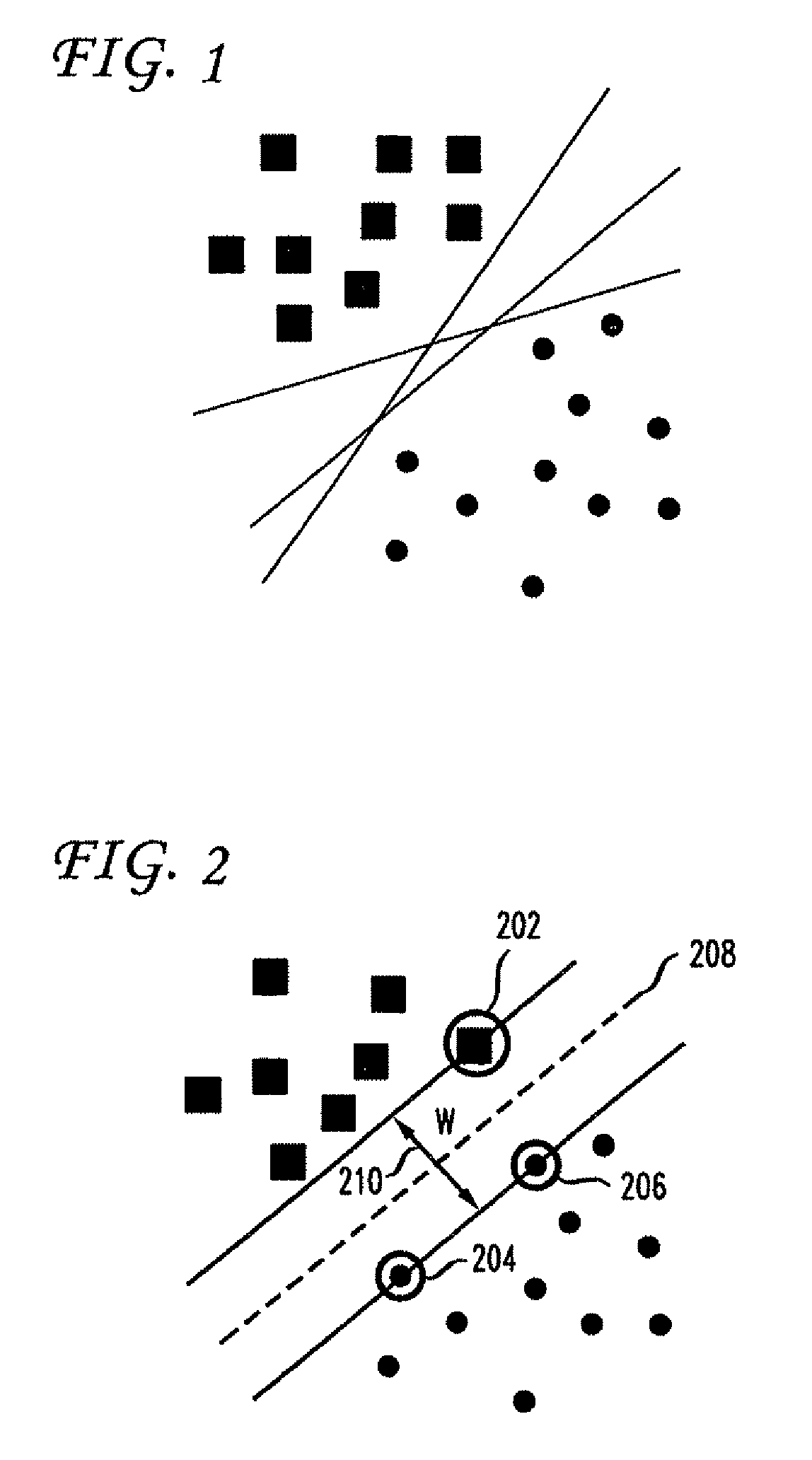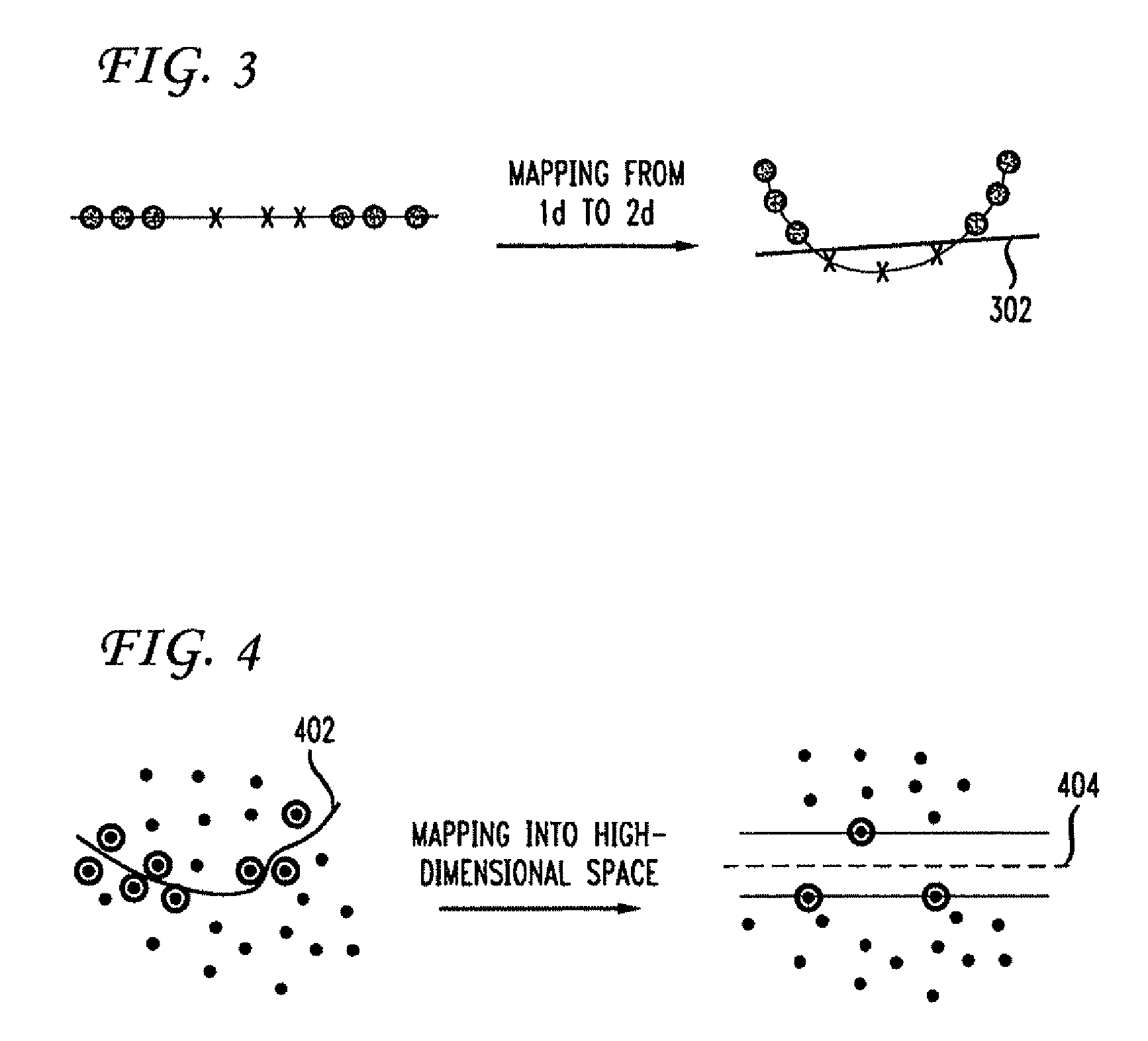Parallel support vector method and apparatus
a support vector and parallel technology, applied in the field of machine learning, can solve the problems of not always the case, the problem of defining the support vector may also be considered a filtering problem, and the inability to linearly separate two dimensional data, etc., and achieve the effect of improving the processing efficiency
- Summary
- Abstract
- Description
- Claims
- Application Information
AI Technical Summary
Benefits of technology
Problems solved by technology
Method used
Image
Examples
Embodiment Construction
[0033]FIG. 5 shows a schematic diagram of one embodiment of a cascade support vector machine (SVM) in accordance with the principles of the present disclosure. One skilled in the art will recognize that the FIG. 5 shows the architecture of a cascade SVM in terms of functional elements, and that FIG. 5 generally describes the functions and steps performed by a cascade SVM. Actual hardware embodiments may vary and it will be readily apparent to one skilled in the art how to implement a cascade SVM in accordance with the present disclosure given the following description. For example, the functions described herein may be performed by one or more computer processors which are executing computer program code which defines the functionality described herein. One skilled in the art will also recognize that the functionality described herein may be implemented using hardware, software, and various combinations of hardware and software.
[0034]FIG. 5 shows a hierarchical processing technique ...
PUM
 Login to View More
Login to View More Abstract
Description
Claims
Application Information
 Login to View More
Login to View More - R&D
- Intellectual Property
- Life Sciences
- Materials
- Tech Scout
- Unparalleled Data Quality
- Higher Quality Content
- 60% Fewer Hallucinations
Browse by: Latest US Patents, China's latest patents, Technical Efficacy Thesaurus, Application Domain, Technology Topic, Popular Technical Reports.
© 2025 PatSnap. All rights reserved.Legal|Privacy policy|Modern Slavery Act Transparency Statement|Sitemap|About US| Contact US: help@patsnap.com



